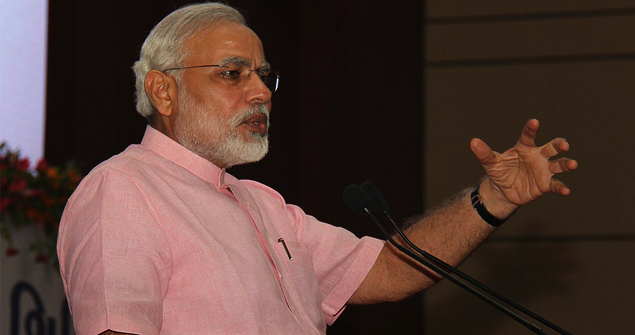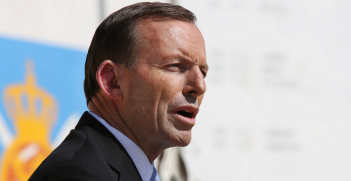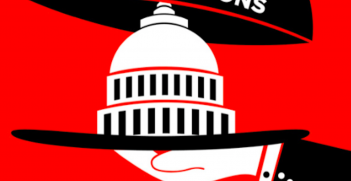Modi’s BJP No Longer Invincible

The tale of the recent February Delhi assembly elections shows how quickly political fortunes can decline.
Prime Minister Narendra Modi’s Bharatiya Janata Party (BJP) recorded a landslide victory at the 2014 national elections and won a majority of seats in three subsequent state elections. But his party suffered a crushing defeat in Delhi, winning just three of the 70 seats. The unexpected defeat dents the image of electoral invincibility of both the BJP and Modi.
On the other hand, the Aam Adami Party (AAP or the Common Man Party) under the leadership of Arvind Kejriwal registered a sweeping victory capturing 67 of the 70 seats. The once-dominant Indian National Congress that ruled Delhi for 15 years from 1998-2013 did not even win one seat.
All exit polls had clearly indicated a victory for AAP with the BJP running second. But none of the polls showed the extent of damage that the BJP suffered. At the last Delhi assembly elections, held in December 2013, the BJP had won 31 seats, AAP 28 seats and the Congress eight seats. With no clear majority, AAP formed a minority government with support of the Congress.
But AAP’s leader Kejriwal walked out of office 49 days after he was elected on the grounds that opposition parties did not support his anti-corruption bills. Delhi voters and his many of his supporters criticised Kejriwal and he was harshly dubbed abhagoda (deserter).
Kejriwal’s position was further weakened by his decision to run against the BJP prime ministerial candidate Narendra Modi for the seat of Varanasi at the 2014 general election. Kejriwal suffered an expected crushing defeat, as the people of Varanasi were unwilling to trust a politician who ran away from his duty in Delhi in the pursuit of greater ambitions at the national level.
Given Kejriwal’s past reputation for neglecting responsibility and Modi’s previous electoral success, even a few months before the Delhi elections no one imagined such a landslide victory for AAP and disastrous results for the BJP.
What changed so soon?
By resigning over an issue of principle, the AAP convincingly distinguished itself from the usual run of politicians who cling to the perks of office at any cost. Kejriwal was honest and upfront with Delhi voters and apologised on numerous occasions for resigning from office after only 49 days. In retrospect, there were positive consequences, which emerged from this much-criticised action. Working class individuals, who often face harassment from the police, experienced a month of welcome relief while the AAPs anti-bribery hotline was in operation. Once Kejriwal resigned, things quickly reverted to the way they had been.
The February election results were clearly a vote for Kejriwal and his policy agenda rather than a vote against the BJP. In 2013 there was a three-way contest between the AAP, the BJP and the Congress Party. In 2015 the BJP share of the vote was virtually unchanged from the earlier election but the Congress’ share of the vote fell to less than 10 per cent. Most Congress voters, particularly the Muslims and minorities, transferred their support to the AAP, giving them a decisive absolute majority of the overall vote. Under India’s ‘first past the post’ electoral system, that ensured an electoral victory for the AAP.
The resounding victory for the AAP poses a serious problem for the BJP, not least because Modi was such a prominent part of the party’s campaign strategy. It also poses a life and death question for the Congress. The desertion of its former supporters and its consequent failure to win a single seat will inevitably raise the most profound consequences for the Gandhi dynasty.
For the BJP there are different issues, some of which may only emerge in the coming years. In his rise to power, Modi has turned the BJP into a highly personalised organisation. Former senior leaders, including L.K. Advani and Jaswant Singh, have been sidelined and their places filled by Modi loyalists. But the traditional power-base of the party has resided in the disciplined cadres of the Rashtriya Swayamsevak Sangh (RSS or National Volunteer Organisation) and the saffron-clad members of the World Hindu Council.
The latter in particular has been pushing aspects of its ‘hindutva’ (Hinduisation) agenda. This includes campaigns against ‘love jihad’ (marriages between Hindus and Muslims) and in favour of ‘ghar wapsi’ (a code for conversion of Christians and Muslims to Hinduism).
If the BJP is to have any chance of making itself India’s most important political party, Modi will have to find a way to distance himself from his extremist supporters. There is an emerging clash between Modi’s highly centralised personal machine and the desires of the more extreme elements of the party. These elements seek to have him implement policies that could make the BJP un-electable in future elections.
Professor Purnendra Jain is a Professor in the Department of Asian Studies at the University of Adelaide. Associate Professor Peter Mayer is a Visiting Research Fellow at the University of Adelaide. This article was originally published in The East Asia Forum on 25 February 2015. It is republished with permission.





